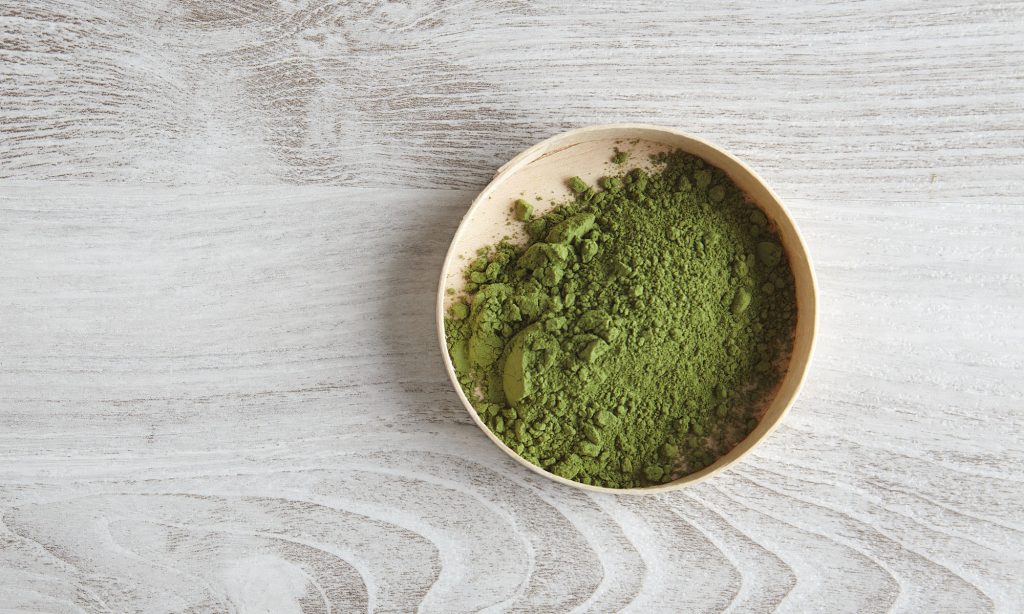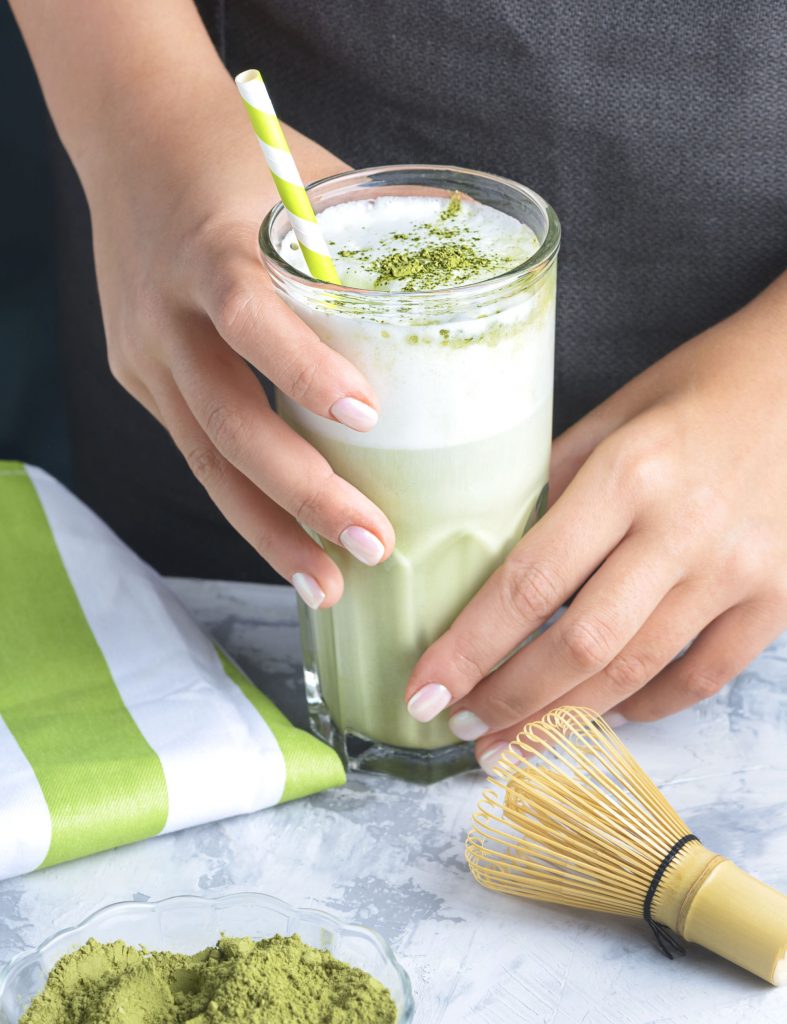Matcha is a very fine green tea, presented in a very fine and fragrant powder, with an intense green colour.
It is grown in Japan, particularly in the city of Uji, on the southern outskirts of Kyoto Prefecture.
Climate and ideal soil conditions are critical to growing fine, quality matcha green tea.
The Matcha tea plantations are protected from the sun in the 15-20 days before harvest. In past years straw was used, today black awnings are used which have the purpose of protecting the plantation from the sun's rays.
This cultivation method preserves all the properties of Matcha tea intact and unaltered, maintaining high levels of chlorophyll and theanine.
There are three different grades of Matcha which are distinguished by various factors such as the period of collection of the leaves, processing and grinding.
Let's find out in detail what differentiates these shades and which matcha to choose.
Ceremonial Grade Matcha
Grade 1 or Ceremonial Matcha tea is the most prized.
The plantations are covered for at least 15 days before the harvest and only the first shoots and leaves of the first harvest are selected, as soon as they emerge.
A lot of care is taken in the processing of the leaves, which are selected and stripped of the stems and veins.
The grinding is stone at low speed, in this way the organoleptic properties and nutrients inside are preserved.
The low speed of the stones means that the temperature remains low and controlled to preserve its properties.
1 hour of grinding only 30 g of Matcha green tea powder.
At the end of the process you will obtain a very fine and scented powder of an intense green.

Premium Grade Matcha
Premium or standard Matcha is of lower quality than Ceremonial Matcha, but still very valuable.
The leaves are harvested and sorted from the second harvest and stone grinding has a slightly higher speed than ceremonial grade Matcha.
The price is decidedly lower than ceremonial matcha and can be used both as a tea to drink, but also in drinks and smoothies or as an ingredient in cooking.
Matcha Culinary Grade
The quality of culinary matcha tea is lower than both ceremonial grade and premium grade.
Leaves of second, third and fourth harvests are selected and the grinding is not always by stone.
The powder is slightly less fine than the other two shades and the color and scent are less intense.
The culinary grade is used exclusively as an ingredient in cooking, in the preparation of recipes or as a natural colourant.

Which matcha tea to choose?
If you are a lover of green tea and want to prepare the perfect Matcha tea according to the Japanese ceremonial, you will need to choose Ceremonial grade Matcha.
The Cha no yu (which means “hot water for tea”) is the tea ceremony, a true social and spiritual rite in Japan.
For this ancient and traditional preparation, the ceremonial grade is certainly the best solution, but the Premium still remains an excellent alternative to the Ceremonial Grade.
Matcha tea is prepared by suspension, in this way all its organoleptic properties are preserved.
For those who do not like the intense and strong flavor of Matcha tea, but still want to fully enjoy all its beneficial properties, they can choose to mix Matcha powder in drinks, shakes or smoothies.
In this case the ideal strength will be a Premium type matcha, which lends itself very well to intensely flavored drink preparations, such as the very famous Matcha Latte.
If instead you want to use it in the kitchen to give a "green" touch to dessert recipes, biscuits or al gelato it is preferable to choose a culinary matcha.
The Culinary grade can also be used as a natural colorant, for example in the preparation of homemade soap.
This division into grades is also very ethical on an environmental level, because in this way all types of leaves are used, from the "best" to the smallest, avoiding waste.
In conclusion, Matcha tea powder is really tasty, it can be drunk as tea, but it also lends itself very well to the most creative combinations... so all that remains is to try it in all shades!
Matcha Green Tea Tiramisu
Preparation time: ~30 min
Ingredients
- 2 tablespoons matcha green tea and 250 ml water
- sugar to taste
- Savoiardi to taste
- 4 eggs
- 110 grams of sugar
- 500 grams of mascarpone
- Matcha tea to taste
Preparation
Place the water in a saucepan to heat. Place matcha green tea and sugar in a shallow dish and add hot water. Dip the ladyfingers in matcha tea. Mix the egg yolks with the sugar, then slowly incorporate the mascarpone. In another bowl, whip the egg whites and incorporate them into the cream until you reach a smooth and creamy mixture. Add the tea powder. Cover the base of a baking dish with the cream then create a first layer with the ladyfingers soaked in green tea. Cover with a layer of cream and continue alternating ladyfingers and cream. Sprinkle a small amount of matcha green tea over the tiramisu. Let it rest in the fridge before serving. You can use a baking dish or make convenient single portions. You can also use other types of biscuits soaked in Matcha green tea.


Leave a comment